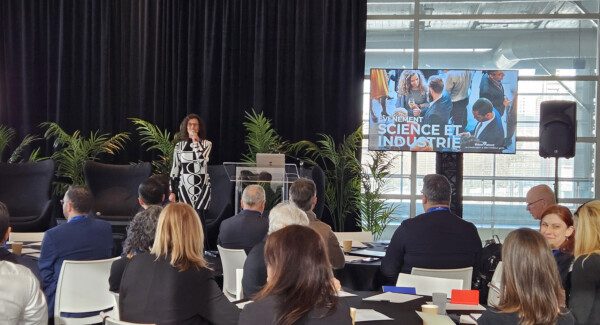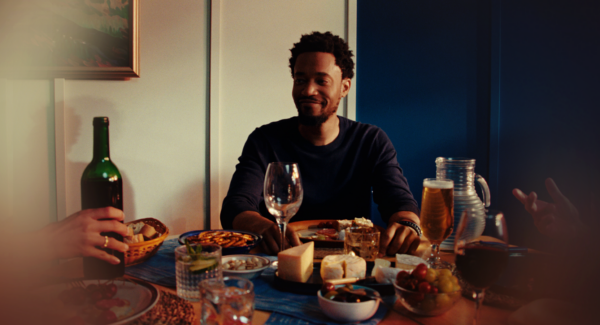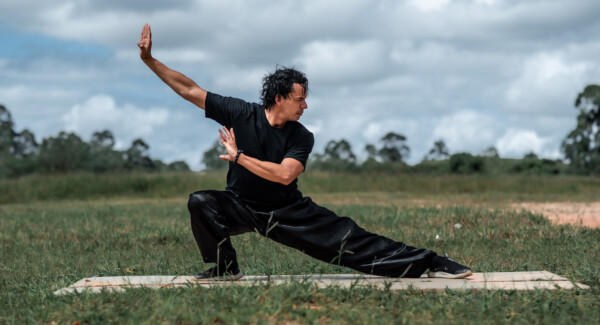Green light: a happy combination
The only substance that has a beneficial effect on human health when combined with alcohol is food. The presence of food in the gastrointestinal system has a positive effect on the absorption of alcohol by the blood. The type of food also makes a big difference. The fattier the food, the longer it takes for the alcohol to pass from the stomach to the intestine4 and the slower the absorption process, thus reducing the person’s blood alcohol content.
Alcohol and food
Studies show that people who drink alcohol after eating a meal high in fat, protein and carbohydrate absorb the alcohol about three times more slowly than those who drink on an empty stomach. Clearly, however, this does not mean we should all be eating high-calorie meals full of fat, protein and carbohydrate. Matching foods with wines heightens the enjoyment of both, to a degree that would be difficult to achieve if one were to eat the food and drink the wine separately.
Combining the right food with the right wine also means taking into account the balance of flavours, the time of day, the season and the type of meal. At cocktail time, beer, cider, whisky and other aperitifs should always be accompanied by snacks, such as nuts or cheese.
Alcohol in mixed cocktails
For the same reasons explained above regarding food, it is better to mix alcoholic cocktails with 100% natural pure fruit or vegetable juice, rather than carbonated or flavoured beverages with minimal nutritional value. If you absolutely must use a carbonated or flavoured mixer, it’s better not to use “diet” versions, since sugar helps metabolize the alcohol.
Orange light: be attentive
Alcohol and coffee
When consumed in moderate amounts, there is no danger in mixing alcohol and coffee. However, people often drink coffee with alcohol for other reasons, in particular when they have drunk too much alcohol and are hoping to mask the symptoms of intoxication.
Studies have demonstrated the antagonistic effects of caffeine and alcohol. Caffeine will slightly attenuate the effects of inebriation and allow a person to perform certain psychomotor tasks. That being said, drinking coffee after drinking alcohol in no way restores all the faculties necessary to drive a motor vehicle. In fact, the amount of coffee consumed has absolutely no effect on blood alcohol content.
Vigilance is therefore called for when drinking alcohol with coffee since the combination may have unpleasant consequences, particularly with regard to driving or other activities requiring full control of all faculties.
Alcohol and energy drinks
In recent years, soft drinks have been losing market share to energy drinks, which people are drinking for the same reason they drink coffee, i.e. their stimulant effect. While rumours that these drinks owe their kick to bull sperm or urine are merely urban legends, they do indeed contain taurine, glucuronolactone and about as much caffeine as there is in a cup of coffee, i.e. 80 mg.
But it’s the way people drink them that makes energy drinks very different from coffee. Energy drinks are drunk cold and packaged for drinking quickly, which means the effects of the caffeine are felt much sooner than with coffee, which is generally served hot and sipped more slowly.
Impact on drinking
Given that people who mix alcohol with energy drinks often do so to mask the unpleasant taste of the alcohol, we can expect that such people will drink a greater amount more quickly and drink more on each occasion. It has also been reported20 that people who mix alcohol with energy drinks tend to drink more than those who don’t mix the two: about 5.8 drinks compared to 4.5. Similarly, the mixers report drinking an average maximum of 8.3 drinks per occasion, compared to 6.1 for the non-mixers. Mixers are also twice as likely to get drunk every week: 1.4 occasions, compared to 0.73 for the non-mixers.
Dehydration
Another warning needs to be issued about the risk of dehydration when mixing alcohol and energy drinks. Caffeine and alcohol are diuretics, meaning they keep water from being reabsorbed by the kidneys and cause more water to be eliminated. This creates a chain reaction: the more alcohol you drink, the thirstier you feel. The real danger lies in continuing to drink alcohol – instead of water – which increases thirst and dehydration.
At parties and where people are dancing it also tends to get particularly warm, and the combination of alcohol and energy drinks further increases dehydration. “Morning after” symptoms – headache, general discomfort, major fatigue – are all related to dehydration.
WARNING!
People should be extremely careful when purchasing energy drinks, because some are already premixed with alcohol. As a result, those who have no intention of mixing alcohol with their energy drink may end up doing so inadvertently. Also, some companies that produce this new kind of alcoholic beverage are packaging them to look like the – alcoholic versions.
Alcohol and gambling
There is a causal relationship between alcohol abuse and pathological gambling. There are more pathological gamblers among those who drink abusively than among the general population. Similarly, pathological gamblers are more likely to drink abusively than the general population.
Abusive drinking and pathological gambling are both addictive behaviours that indicate a loss of control and involve obsessive thoughts about alcohol and low deposit gambling. Even when they are aware of the harmful consequences of their habits, addicts continue their abusive behaviour.
Among both alcohol abusers and pathological gamblers, changes can be observed in the brain centres responsible for pleasure and emotions. Both behaviours are associated with a disturbance in the neurobiological mechanisms related to impulse control and reward.
Clinical studies have underscored the limits of genetic explanations and stressed the need to examine contextual factors as well. The comorbidity of alcohol abuse and pathological gambling are explained by the fact that abusive drinking disinhibits pathological gambling. People commonly gamble while drinking alcohol.
People with a high blood alcohol level are thus less able to evaluate the real chance of winning and are less likely to remember past losses. These contextual explanations complement the observations of brain activity.
WARNING !
People who enjoy gambling should avoid drinking alcohol at the same time. The combination of alcohol and gambling increases the risks of gambling inappropriately, i.e. pathologically.
Red light: Look out !
Alcohol and tobacco
Data on the general population reveal that smokers drink more than non-smokers; that drinkers smoke more than non-drinkers; that alcohol abuse is associated with heavy tobacco use; and that the vast a majority of alcoholics smoke. Alcohol and tobacco seem to make the “perfect” couple.
Three explanations have been offered regarding the correlation between drinking and smoking:
- Both have similar contextual risk factors, i.e. they are both associated with “time out.” Until just recently, they were the two main products found in locations where people relax and enjoy themselves, particularly where alcohol is available.
- Drinking and smoking share the same genetic and psychiatric risk factors.
- The astonishing aspect of the alcohol-tobacco connection is the association between episodic drinking and occasional smoking. Many social or weekend smokers experience a sudden and acute craving for a cigarette when they are drinking excessively. Similarly, people who quit smoking often find themselves starting up again during a night of heavy drinking. Such phenomena are caused by the pharmacological interaction between alcohol and tobacco, and are characterized by an intense physical need to smoke.
Alcohol and drugs
The combination of alcohol and drugs or illegally obtained medication is observed most commonly among drug addicts. In the general population, thrill-seekers and young people – who have a pronounced taste for new experiences – are most at risk for this dangerous mix.
Alcohol and drugs are generally combined to enhance the pleasurable effects of one or the other, or to diminish such unpleasant effects as anxiety or drowsiness. Whatever the reason, the combination of alcohol and drugs creates a pharmacological interaction that can be extremely dangerous and even deadly.
One of the great dangers in combining alcohol and drugs is that the effects are impossible to predict.37 So many factors can influence the results that it is not possible to consider both substances together with any accuracy. Among other things, the effects of the mix will depend on the mix itself, the dose, how it is administered, the order in which the substances are taken and the sociocultural circumstances, as well as the person’s age, sex, weight, nutritional condition, physical health and psychological state.
Alcohol and medication
Some medications, in particular over-the-counter products like painkillers, may hinder the elimination of alcohol, increase or mask their effects, or cause unpredictable reactions. Conversely, alcohol can make medications less effective or interfere with their elimination. Anyone taking medication should be properly informed about contraindications before drinking alcohol at the same time. It is important to remember that, like alcohol, medications are eliminated by the liver, and as a general rule, it is better not to drink while taking medication.
Alcohol and cannabis
When taken together, a synergy is produced, increasing the sedative effects of both the alcohol and the cannabis. Judgement, reaction time and coordination are obviously affected and driving is out of the question.
Because cannabis inhibits the part of the brainstem responsible for vomiting, combining it with alcohol can be particularly dangerous, and even deadly. When people drink too much and are in danger of alcohol poisoning, the body’s natural response is to vomit. By inhibiting the vomit instinct, cannabis thus increases the danger of alcohol poisoning.
Alcohol and other illicit drugs
Only 2.5% of the general Québec population use cocaine, speed, ecstasy and hallucinogenic drugs. A strong warning must be issued against combining such narcotics, stimulants and hallucinogens with alcohol.
These combinations can produce an antagonism in which the properties of one substance suppress or attenuate the effects of the other. This can be extremely serious, as people may be unable to detect the impact of the substances they are taking. In other words, they may not feel as pronounced a “high” even though the physical effects of the drugs and alcohol on various organs and functions will be the same. The combination of alcohol and stimulants can create an additive synergy that increases the risks of overdosing on either substance. For example, drinking alcohol with a stimulant like cocaine increases the speed with which alcohol spreads throughout the body, which means it reaches the brain more quickly. The result is a significant increase in blood alcohol content, as if the person had drunk very quickly.
Purple light: severe danger
All the various aggravating and attenuating factors notwithstanding, the most dangerous alcohol-drug combinations are those in which alcohol — which is a sedative — is combined with another sedative, such as a barbiturate, a benzodiazepine or an antihistamine. GHB (the “date rape drug”) is another sedative that can sometimes be found where people are partying. The sedatives sold by street dealers include PCP (mescaline, mess, horse, angel dust, TH, peace pill, crazy Eddie), GHB (G, liquid ecstasy, liquid x, fantasy) and ketamine (special K, K, vitamin K, ket).
When alcohol is combined with these psychotropic drugs, a mutually reinforcing synergy is created in which the com-bined sedative effect is greater than if the two substances were taken separately. Such combinations can severely depress the central nervous system, with consequences ranging from confusion to unconsciousness to death.






